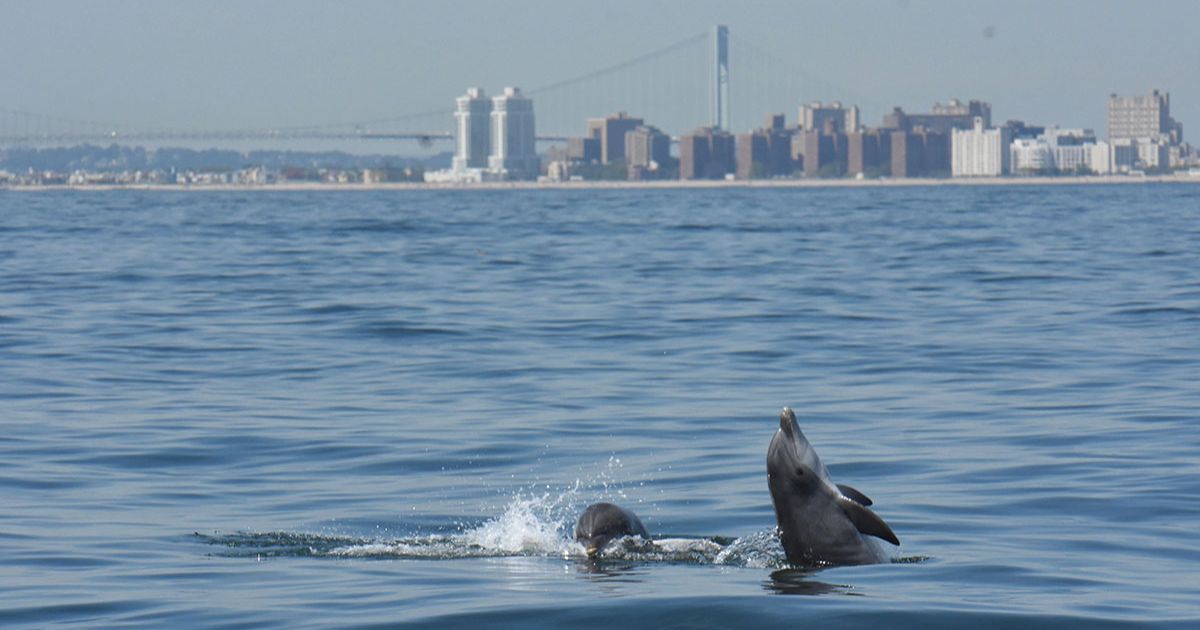They click. They whistle. They love seafood. They are New York City's nearshore bottlenose dolphins (Tursiops truncatus) that return to feed in local waters from spring to fall each year, and a team of scientists led by the Wildlife Conservation Society (WCS) is tracking them.
The team deployed underwater listening devices at six locations off Brooklyn, Queens, Staten Island and New Jersey, to detect where and when dolphins fed. Dolphins produce a series of rapid clicks called "foraging buzzes" which can reveal feeding activity.
They found that feeding was generally highest in late summer into autumn, but it peaked at different months at different sites. Variables such as water temperature, currents, and shipping activity may affect where dolphins seasonally feed. The team published their findings in the Journal Marine Ecology Progress Series.
The purpose of the study is to see how marine mammals are using the highly urbanized waterways of New York. The findings from this and other studies can be used to help inform mitigation measures that can reduce human-wildlife conflict. In the New York-New Jersey Harbor Estuary, bottlenose dolphins are exposed to various stressors, including vessel activity and potential impacts associated with forthcoming offshore wind development.
Said the study's lead author, Sarah Trabue formerly of Columbia University and now with WCS's Ocean Giants Program: "By investigating how marine predators, such as bottlenose dolphins, are behaving within heavily urbanized ecosystems, we can gain insight on how these predators influence and are influenced by their environment, which can be used to guide conservation efforts, mitigation measures and best practice recommendations."
Journal Reference:
SG Trabue, ML Rekdahl, CD King, S Strindberg, SK Adamczak, HC Rosenbaum. Spatiotemporal trends in bottlenose dolphin foraging behavior and relationship to environmental variables in a highly urbanized estuary. Marine Ecology Progress Series, 2022; 690: 219 DOI: 10.3354/meps14041



